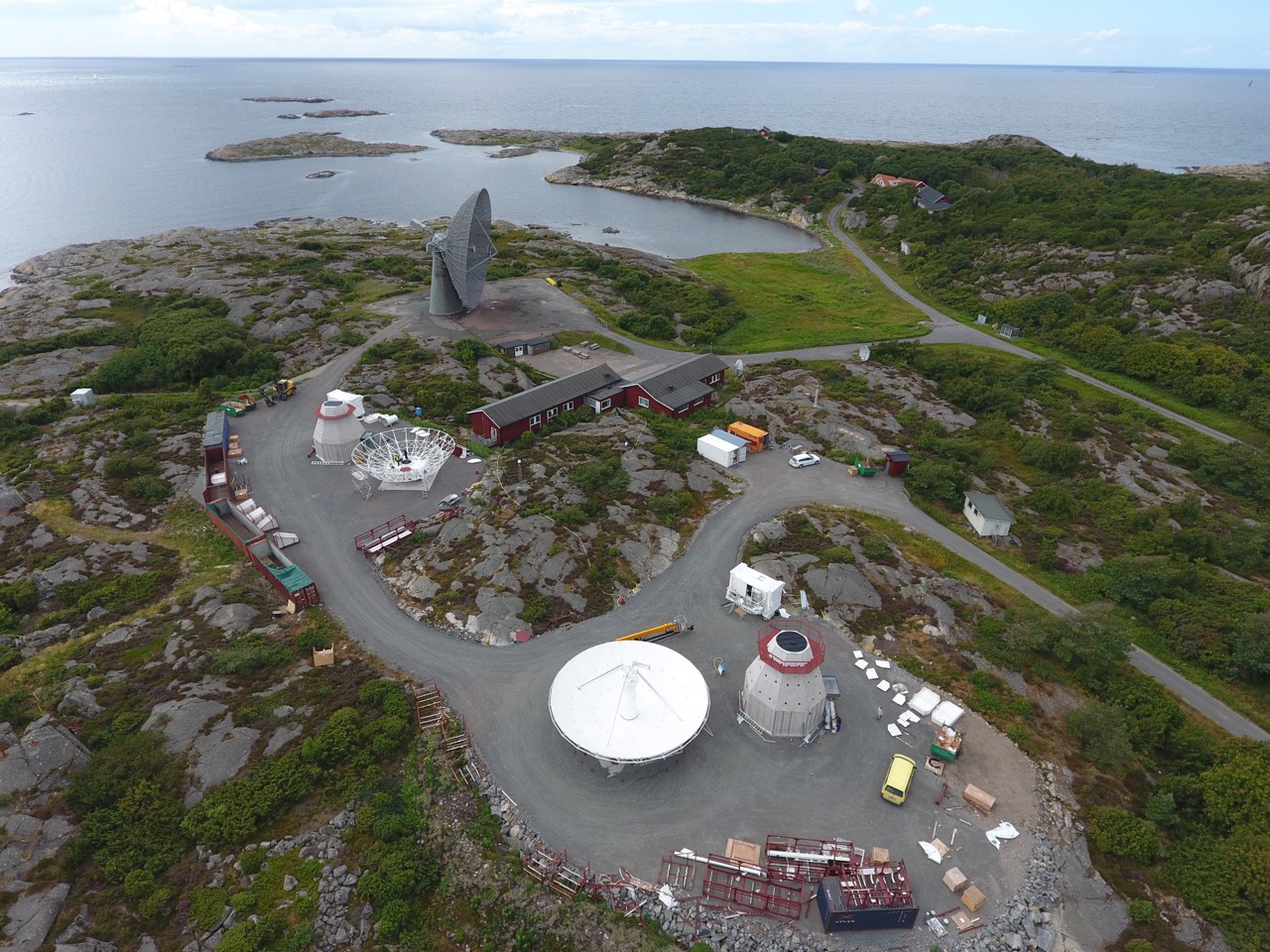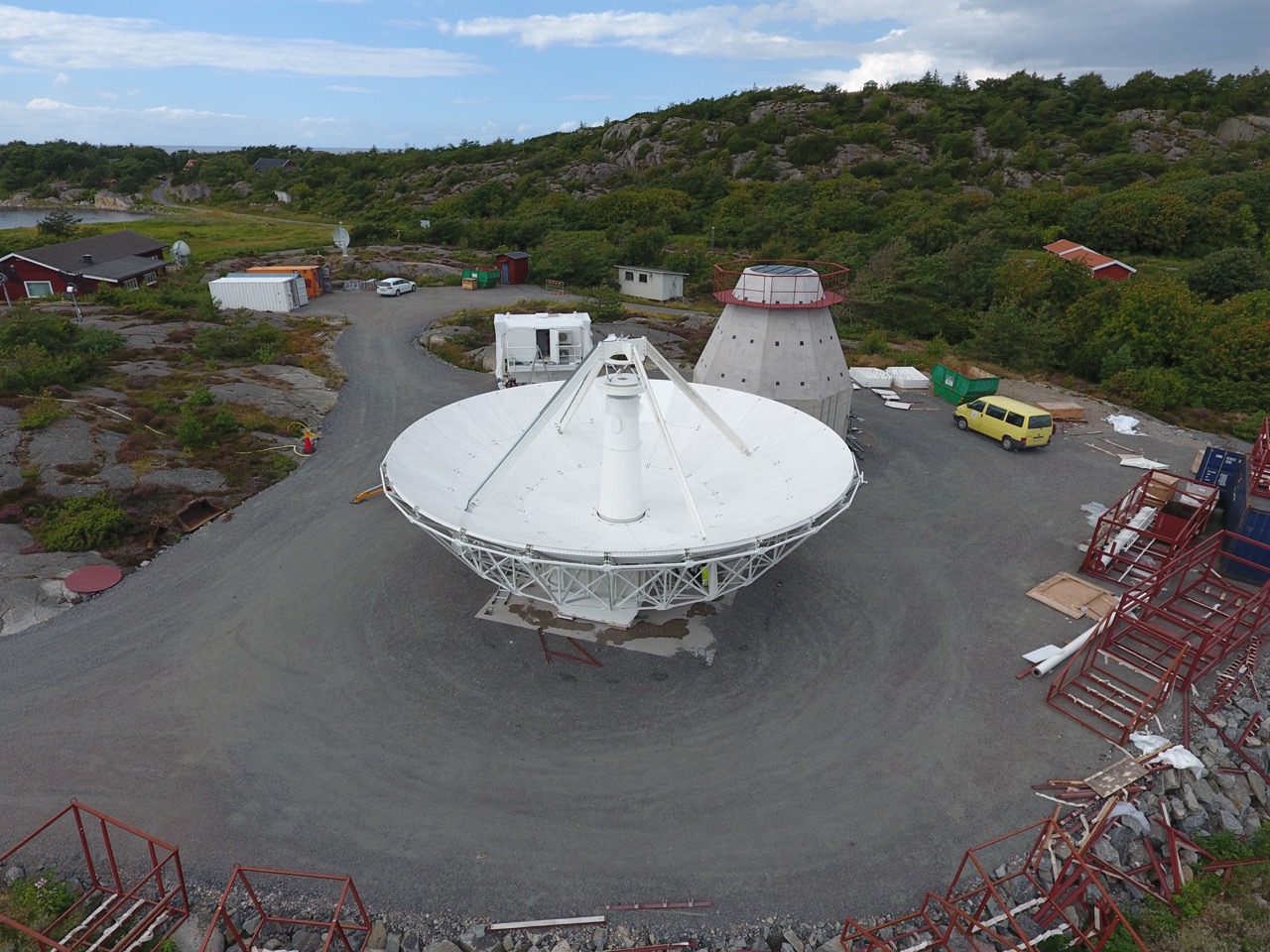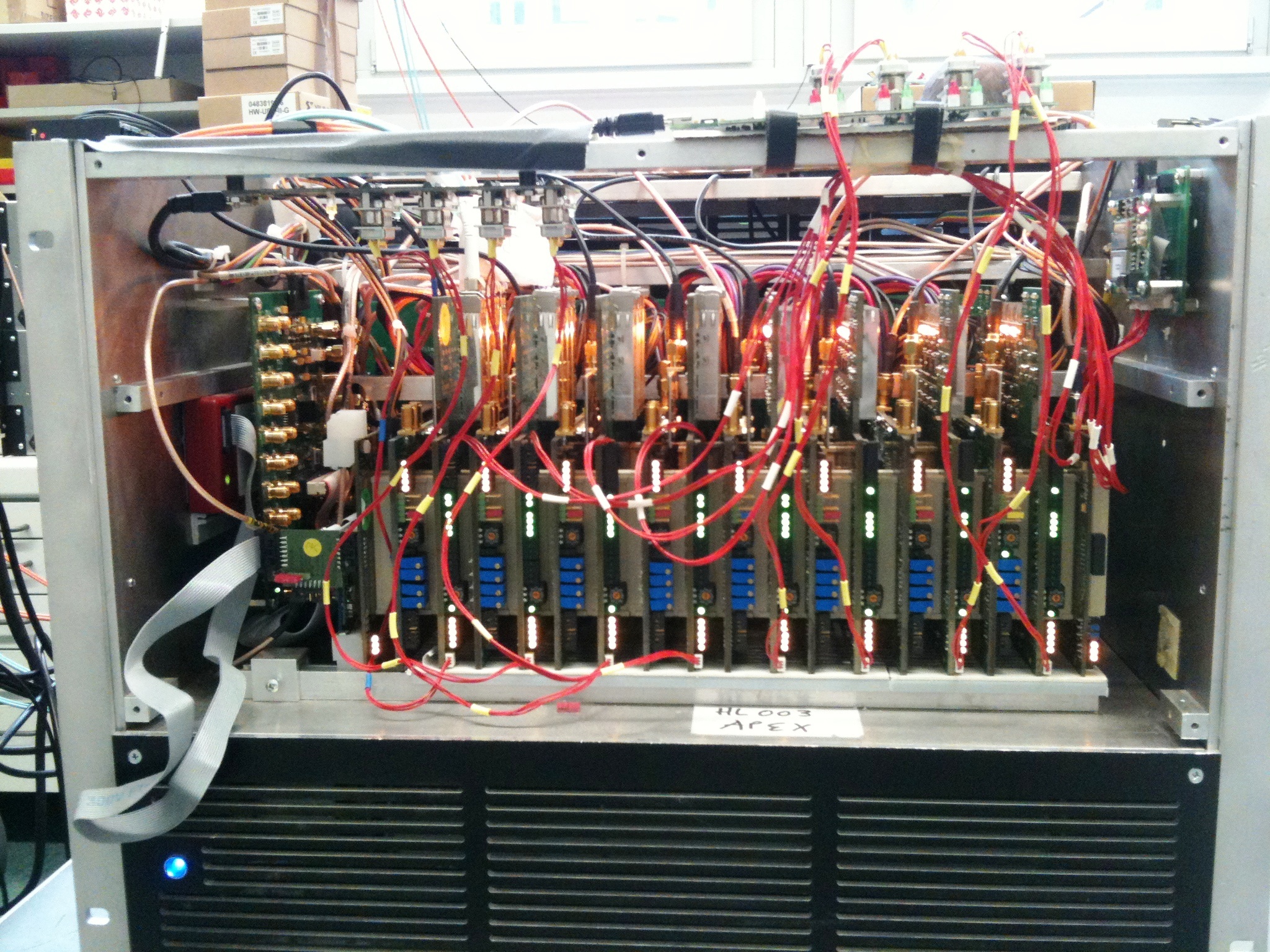...
Arthur Niell - 2016 Jan 27
Kokee
The The VLBI Signal Chain had the Sight Acceptance Review (SAR) and continued evaluating the entire VLBI system (antenna, field system, signal chain, etc). K2 observed with the VGT001 (see below) and presently resolving an issue with air condioner failure in the pedestal and impact on continued observing. The operational readiness review (ORR) is still projected to be executed in August.
Chet Ruszczyk - 27 July 2016
The observations for the commissioning phase of the 12m has been completed, ending with three 24 hour observing sessions between K2, Wf, and Gs. TChe data are being correlated and analyzed. We are working toward the VLBI Operation Readiness Review (ORR) now scheduled for August, which means release of final documentation, software and procedures.
Chet Ruszczyk - 25 May 2016
Verification and checkout of 12m is under way.
...
Yoshihiro Fukizaki - 28 Jan 2016
Onsala
Rüdiger Haas - 26 May 2016
...
AuScope (Hobart, Katherine and Yarragadee)
Initial testing of Stirling Cycle broadband system has been completed at Hobart. Upgrade of all three sites to broadband planned to be completed by mid 2017 (was hoped to be by the end of 2016).
The prototype is now back in Hobart and will be installed on the 12m in about a week.
Tests of Dynamic Scheduling with the three AuScope antennas and others (most recently Hart 26m) are continuing with the next observations planned for June.
Jim Lovell - 26 May 2016
Kashima 34m
Boradband (5.9GHz,7.1Ghz,8.7GHz,10.6GHz) VLBI experiments on GALA-V network (Kas34-MBL1-MBL2) were repeated several times(May26, Jun24, Jul10). It s purpose is evaluation of broadband VLBI precision. Observed data were correlated by GICO3 software correlator and stored in Mk3DB. Then solution with CALC11/Solve indicating that even with small diameter antenna (SEFD~5.e5Jy vs SEFD~2000 Jy pairs), we can get geodetic solution with ~30 ps delay residual. It is promising that VGOS (2000Jy - 2000Jy) observation should get high delay precision measurement. We are planning to make further test experiments with Ishioka-MBL1-MBL2 in August. A long baseline observation test was made between Yebes-Kashima34 in June. but because observation modes were different at each site (Broad channel at Kashima and narrow channel at Yebes), correlation process is required some modification. Another test experiment has been discussed between Kazu and Jim.
...
Mamoru Sekido - 27 July 2016
Yebes
Broadband system temperatures are ~ 50 K - 70 K. The warm amplifiers after the cryogenic ones and before the optical fiber converters had to be removed to avoid saturating the amplifiers used to modulate the optical laser. This increased the Tsys by a factor 2. Furthermore one of the optical channels uses an 18 dB amplifier and the other one 9 dB. This is an issue to be solved in the future.
The antenna phase cal unit has a temperature control system which has been switched off to avoid subbands in the phase cal tones.
UDCs are installed and working.UDCs 2 and 3 connected to one DBBC2
One Mark6 was installed and configured. 4 packs 32 TB each are inserted and work as a single group. There are two optical connections between the DBBC2 and the Mark6.
One RDBE-G installed and configured. The RDBE-G is also connected to the Mark6.
The second DBBC2 is used for observations with the 40m RT. usage for VGOS requires that no VLBI osbervations happen simultaneously between the 13.2m and the 40m. A DBBC3 will be ordered very soon and 3 or 4 RDBE-Gs may also be ordered soon.
Pablo de Vicente - 25 May 2016
The 13.2m antenna stopped operations (VS observations with the S/X/Ka receiver) on January 8th and is under upgrade works: the backstructure is being covered with cladding and fans are being installed in between the backstructure and the cladding. The three band receiver cryostat is going to be updated with a new head, and a new compressor compatible with the broad boand receiver is beeing installed. All these works are expected to complete in February 18th.
...
GGAO, Westford, Wettzell, Yebes and KPGO Broadband Fringe Testing
- FT6119
- Gs and Wf have been recording all four bands using UDCs, RDBE-Gs and Mark6.
- Ws and Yj recorded band B (sky frequency of 4712.4 GHz) with the DBBC2 and Mark6.
- The PCFS (version 9.12.13 ) was used to control the systems.
- Fringes were detected for both polarization for Ws but only 1 for Yj (configuration error was the cause for not both polarization's).
- FT6128 was a retest of FT6119 with the goal of correcting configuration issues and other anomalies observed.
- Fringes were detected for both polarization for Ws and Yj.
- Anomalies still existed.
- FT6140 incorporated BandC ( 5832.4 GHz)into the observation for Ws and Yj (2 Band Test)FT6XXX Next steps under discussion.
- Fringes were detected for both bands / pols.
- Improved performance to earlier tests
- Investigations continues.
- Yj, RDBE-G was tagged along on Band B. No fringes detected, problem determined.
Chet Ruszczyk, for folks at Gs, Wf, Ws, Yj, Haystack and Ed (PCFS) - 25 May 2016
Westford Mixed Mode Fringe Testing
On July 19th Westford tagged along in a mixed mode test (broadband and legacy observing) with RD1606. Westford observed the entire RD session, but the Haystack correlator will process 1 hour of data. Once the correlation procedures are verified and updated they will be sent to Bonn with the goal of expanding the knowledge of mixed mode processing, before USNO, and inclusion of broadband systems with existing legacy observations.
Chet Ruszczyk, Arthur Niell, Mike Titus, Mike Poirer - 27 July 2016
Technology Updates
DBBC3
DBBC3
...
Report
G. Tuccari
on behalf of the development team.
27/07/2016
A new calibration scheme has been implemented which allow to perform in automatic almost all the settings. The initial characterisation remains to be performed in laboratory and coded in the control software together with a ID in the ADB3L boards. The initial settings for such boards then requires a novel strategy to optimally operate.
The DUCS control software in the latest implementation adopts such strategy and all the sampling boards whether required to operate with the DUCS have to be updated to the new method.
Firmware development continues and the 3DSC, full band at 4GHz, is operative under the DUCS. 3DDC is available in alpha version with different schemes of number of bbc vs bandwidth.
The current implementation can support in a single CORE3H:
4 independend U&L bbc with 128MHz bwd (then 32 bbc in a full VGOS system)
8 independent U&L bbc with 64MHz bwd (then 64 bbc in a full VGOS system)
16 independent U&L bbc with 32-26-8-4-2MHz bwd (then 128 bbc in a full VGOS system)
Similarly the 3PFB mode is progressing and the current implementation can support in a single CORE3H:
1 PFB bank with 16 channels 256MHz bwd (then 128 channels in a full VGOS system)
4 PFB banks with 16 channels 64MHz bwd (then 512 channels in a full VGOS system)
In the next months laboratory and on-field test will be performed in order to validate both the 3DDC and 3PFB modes in these first implementation.
...
The development activity is mainly concentrated on the realization of the unified control software which connects all the functionalities realised by the different parts of the system.
A number of
The development activity is mainly concentrated on the realization of the unified control software which connects all the functionalities realised by the different parts of the system.
A number of calibrations are required for each IF and simplification/automatization methods are under test. A number of commands will be added to the control software in order to activate in background such 'continuous' calibrations if required.
...
A number of VGOS complete systems (8 IFs) is under construction.
G. Tuccari - 26 Jan 2016
...
The DBBC unified control software was completed in the main tasks, still remaining to be added the functionality for the DDC and PFB modes,
now possible with low level commands. Completion in its first formal version and testing are under way.
...
G. Tuccari - 27 April 2016
DBBC3 Report
The DBBC3 unified control software DUCS is under test and additional functionalities have benn added for
the VGOS 8 IFs version.
In particular the infrastructure for managing the different bandwidth has been improved.
A picture of the DBBC3-VGOS system is attached; its data rate for VGOS 2 bit modes is 128 Gbps, while
the maximum data rate with the same hardware is 512 Gbps.
Additionally it started the realization of the firmware and software to accomplish the standard
DBBC2 functionalities in DDC and PFB mode. This is in particular accomplished by the possibility to
have GCoMo and CoMo modules in a same system.
DBBC3 DBBC3 - VGOS (full)
...


